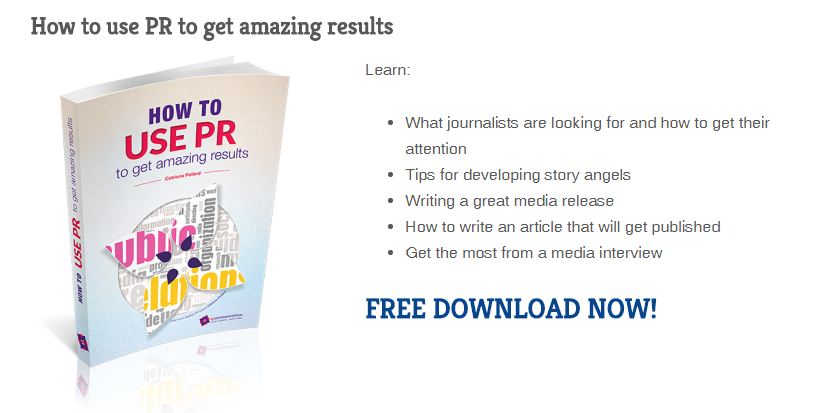How to write an article that will get published
Feature articles, case studies, analysis, user stories, opinion pieces are useful PR tools to project an individual’s or company’s thoughts, services, activities, philosophy and expertise.
Before putting pen to paper have a think about how it will be sold or used. Your writing, research or thoughts will be published if they are pertinent, entertaining, informative and well written. It is critical to adopt an external and objective perspective.
Articles will not be published if the writing is padded, inconsequential, boring, uses too much jargon, or is overlong, theoretical or irrelevant. In short, it must pass the “So What” test if it is ever going to achieve a wider circulation than a sub-editor’s bin.
Articles have a better chance of passing the “So What” test if they:
- Refer to issues and organisations everyone knows about. How your new business process works in theory is dull – how it will measurably benefit BHP is fascinating.
- Apply to this market. A case study on Telstra is more interesting to Australian readers than one on Hong Kong Telecom.
- Give a clear business benefit. How your company’s new system could be used to enhance shareholder value in many (unidentified) companies is inconsequential; how it could cause Coles Myers shares to increase in value by 25% is compelling.
- Are relevant and timely -How a law or judgement could be applied in a hypothetical situation is irrelevant and idle speculation; how it could be applied in the Hunter Valley dispute is topical.
Part 2
It is worth remembering that every media is merely a conduit to an audience. Who are the people you would most like to read your article and what is the best media to reach them?
Using lots of jargon in your article will lose you a lot of readers, and detracts from the quality of your message. If an article cannot be understood by a reasonably intelligent person who is not involved in the sector, it is likely to be overly¬ jargoned. This is particularly so for technical and information technology subjects.
It is important that the article is factual. Your views alone on where the stock exchange may be heading are of little interest or value outside your office or telephone circle. Research which factually supports your position or conclusion is valuable.
If you are offering opinions or arguing a controversial or adversarial position, you’ll need to back it with facts, preferably new ones or make sure you pass the “so what” test in capitals.
To gain attention and enhance credibility your opinion must be intellectually sound. If your opinion contributes a genuinely fresh and different perspective to a topical issue, then it has a better chance of receiving the prominence it deserves.
Some time-tested approaches for putting together or structuring your article:
- Identify a problem, give a solution
- Suggest a new approach
- Develop the pool of knowledge on a subject
- Describe the lessons learnt from a project/transaction/ruling/issue and their applications to other areas
- Conflict the majority view or “perceived wisdom” Chronological
- Give the “inside” story – new information about an already well known event, activity or undertaking.
Your article can generally be improved by:
Using another source. Your article is about showcasing you and your firm’s competency/brilliance. It has a lot more authority if your customer or client is saying this, and is an active part of the story. If your new product/service is brilliant, get a buyer or user to say it.
Want more tips? Download this FREE ebook:
Sydney Public Relations Agency, CP Communications provides specialist media, traditional and online PR strategies that get amazing results. Contact us today. For more PR tips see www.PublicRelationsSydney.com.au.

